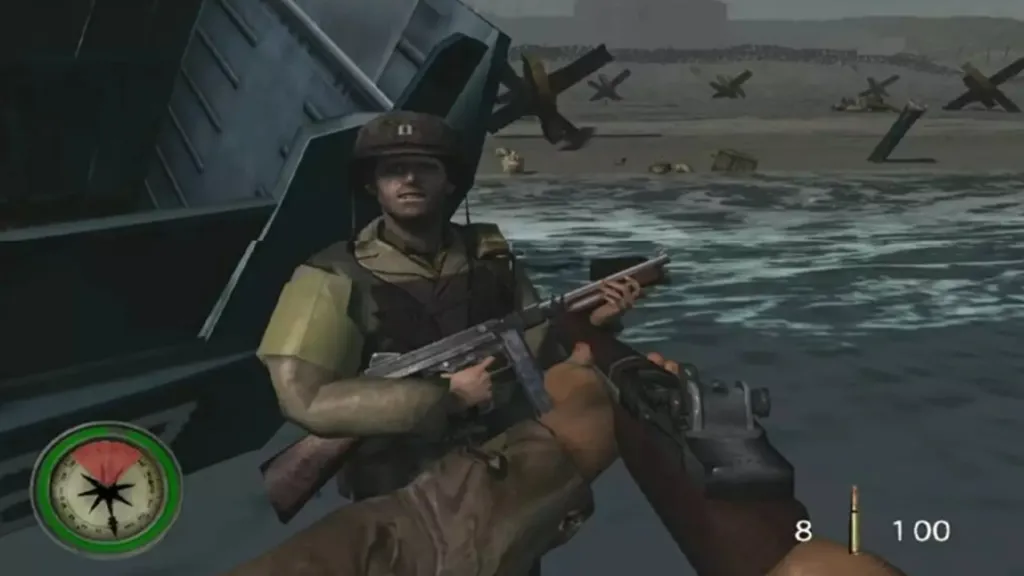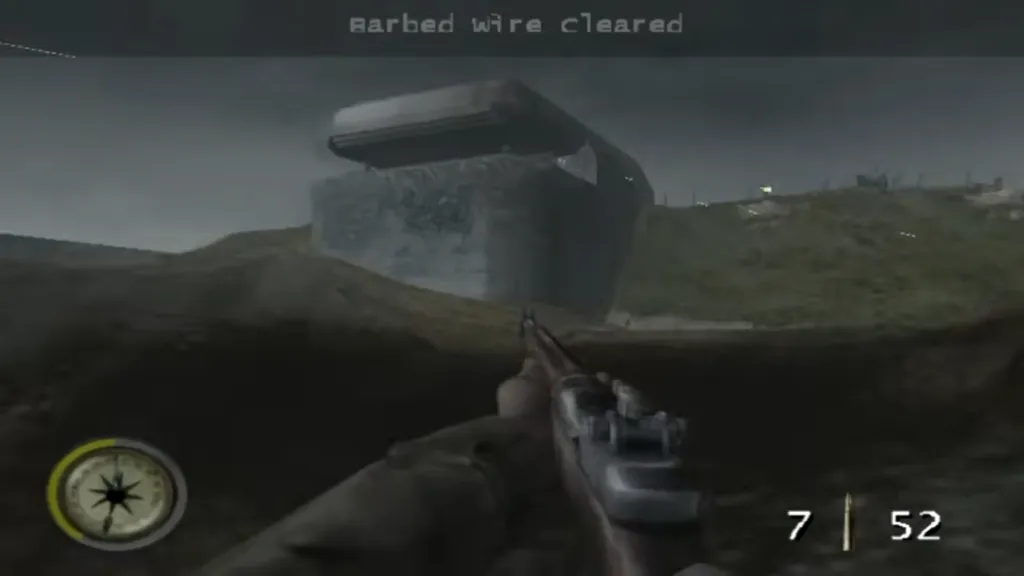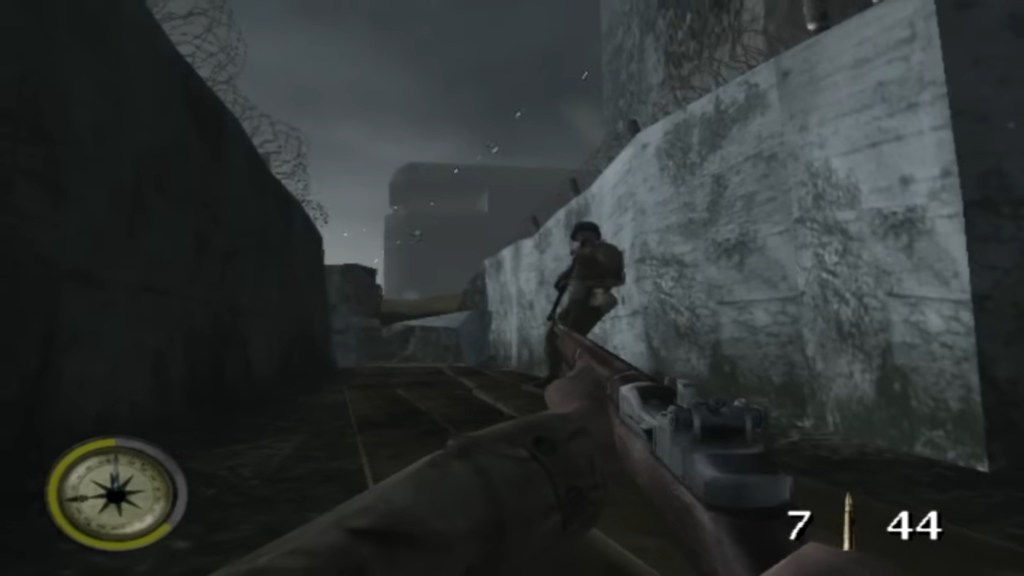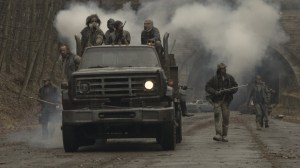Back in 2002, EA delivered one of the best FPS missions in the history of gaming. At the turn of the 21st century, the first-person shooter found itself evolving into one of the premier genres of the medium. While shooters had always had a place in the gaming world, increasingly immersive graphics and increased emphasis on multiplayer gameplay opened up players to titles like GoldenEye, Halo, and Counter-Strike. Shooters have never really fallen out of favor since, but those early days of 21st-century FPS titles remain a benchmark for the genre.
Videos by ComicBook.com
Some levels in particular still stick out years later, whether that’s “Liberty Island” in Deus Ex, “We’ve Got Hostiles” in Half-Life, and “The Silent Cartographer” in Halo: Combat Evolved. However, one of the most effective and memorable FPS missions of all time remains a prime example of how games based on history can blend real-life events and FPS mechanics to deliver something that isn’t just thrilling, but horrifying, heartbreaking, and rewarding all in one fell swoop.
Medal Of Honor: Frontline’s D-Day Mission Is An All-Time Great FPS Introduction

The first level of Medal of Honor: Frontline remains one of the most effective introductory levels in the history of the genre, even 23 years after it debuted. Earning strong reviews from critics, the overall experience of Frontline made for a compelling FPS throughout history. However, it was the opening level that most stood out, serving as a harrowing tutorial mission and introduction to the horrors of war.
The first level throws players into the D-Day assault on German-occupied Normandy, with players introduced to the stress of the landing in a first-person perspective. There’s little in the way of graceful onboarding or a comforting introduction. Players are brought into the wartime situation immediately when the assault is countered by overwhelming German firepower, forcing Jimmy Patterson over the side of the boat when his boat is blown up.
Swimming to the beach while being pelted with bullets, players witness other soldiers around them storming the beach or dying trying. It’s very much a video game translation of the opening scene of Saving Private Ryan, and it works. Moments like the player’s desperate swim to the surface as bullets zip through the water are unforgettable, and that’s before the player has gotten the chance to fire a single shot. It’s action-packed and intense, fully drawing the player into the tension, terror, and triumph that will go on to define Frontline‘s approach to FPS combat.
Medal Of Honor’s Best Qualities Are All On Display In The Omaha Beach Level

The chaos of the situation is harrowing, especially as the player witnesses other soldiers fall all around them. Taking cover behind capsized boats and on the beach forces the player to rush across a battlefield littered with bodies, with players tasked with rescuing soldiers by providing covering fire. There’s never a sense that the player is ever in control of the situation, especially as NPC soldiers are blown to bits by artillery fire mere feet away from where the player is at any given time.
It’s chaotic, but never confounding. Instead, following the directives of the squad commander on the beach, players can get explosives and help destroy the seawall that separates the German forces from the American assault. The result is a level that lets the player take center stage but never lets them feel as if they are a solo hero single-handedly winning the war. Instead, the focus on saving other soldiers and advancing as a unit on the German position reinforces the idea that the player is just one person amid the horrors of war.
While other military shooters indulge too openly in the gore and destructive attributes of their war-torn conflicts, Frontline‘s D-Day mission gives players bursts of heroism that never undercut the intensity of the situation or the horror of the conflict. It’s the closest gaming has ever come to replicating the delicate balance of battlefield horror and wartime heroics that makes films like Saving Private Ryan so effective, and it remains one of the most memorable FPS levels I’ve ever played.
What Frontline’s D-Day Mission Gets Right That Other Historical Shooters Mess Up

There have been lots of historical FPS games over the years, many of which have tried to balance the gravitas of their subject matter with the importance of compelling game design. Titles like Battlefield 1 and Brothers in Arms do a good job as well, but there’s something visceral in Medal of Honor: Frontline‘s approach to the D-Day Invasion that has rarely been matched in the entirety of the genre.
There’s a clear human cost to even reaching the beach, with the player forced to watch as plenty of other soldiers die before they even reach the ground. The player has to keep moving on the beach, as being out of cover for even a few moments will see Jimmy’s health depleted to nothing in a barrage of bullets. So much of the level is predicated on the player’s intervention, where they get to use a turret to bring down German sniper positions or rush to help give an explosives expert cover.
However, it all speaks to the idea that the player is just one in a thousand soldiers, whose efforts are being replicated up and down the French coast. You can feel heroic, but never at the cost of the rest of the soldiers fighting side-by-side with you. It’s exciting and horrifying, and it all feels painfully human, in a way only a few good military shooters have ever been able to achieve. While the rest of Medal of Honor: Frontline is good, the opening level remains the pinnacle of the historical FPS approach.








